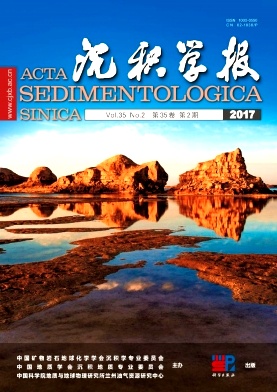Characteristics of Magnetic Susceptibility of Cored Sediments and Their Implications for the Potential Methane Events in Northern South China Sea
doi: 10.14027/j.cnki.cjxb.2017.02.008
- Received Date: 2016-04-19
- Rev Recd Date: 2016-05-19
- Publish Date: 2017-04-10
-
Key words:
- magnetic susceptibility /
- authigenic pyrites /
- methane events /
- northeastern SCS /
- sediments
Abstract: In marine methane seepage areas, sedimentary magnetic susceptibility was characterized by abnormally low values, which was related to the formation of authigenic minerals resulted from the anaerobic methane oxidation (AOM) within the sulfate-methane transition zone (SMTZ). In this study, 400 sedimentary core samples from Site DH-CL11, Site973-2 and Site973-4 drilled in the northern South China Sea were measured. In connection with the relative content and the sulfur isotopic values of the authigenic pyrites handpicked from the aforementioned 3 sites, the variation characteristics of sedimentary magnetic susceptibility and its indication for methane seep events at the potential gas hydrate areas in the northern South China Sea were discussed. At Site DH-CL11, sedimentary magnetic susceptibility first significantly decreased and then abnormally increased within the paleo-SMTZ (705.5~765.5 cmbsf), which is probably related to the depth change of the SMTZ. At Site 973-2, sedimentary magnetic susceptibility showed a decreasing trend within the paleo-SMTZ (453~492.5 cmbsf). Greigites were discovered under the SMTZ, which may be related to frequent changes of the SMTZ or the anaerobic oxidation of authigenic pyrites. At Site 973-4, sedimentary magnetic susceptibility significantly decreased within the paleo-SMTZ (584.5~878 cmbsf), which was considered to be resulted from methane seep events. In general, these results show that under the methane seepage environments, HS- produced by AOM reacts with magnetic minerals in sediments, resulting in the dissolution of magnetic minerals coupled with precipitation of paramagnetic pyrite, both of which will make an anomalously low MS value in the SMTZ; However, with low HS- concentration, insufficient supply of HS- will lead to partial pyritization, which will result in the preferential formation of greigites followed by secondary magnetic susceptibility signals. Therefore, in gas hydrate prospecting areas, abnormal characteristics of the sedimentary magnetic susceptibility are feasible to indicate deep methane flux variation, thus to show a further indication for the evolution of the underlying gas hydrate occurrence. The abnormal characteristic of sedimentary magnetic susceptibility becomes an indirect but available method to explore gas hydrate occurrence, which is helpful for gas hydrate exploration in the northern South China Sea.
| Citation: | LIN RongXiao, WANG JiaSheng, SU PiBo, LIN Qi, SUN Fei, YANGJunXia. Characteristics of Magnetic Susceptibility of Cored Sediments and Their Implications for the Potential Methane Events in Northern South China Sea[J]. Acta Sedimentologica Sinica, 2017, 35(2): 290-298. doi: 10.14027/j.cnki.cjxb.2017.02.008 |






 DownLoad:
DownLoad: